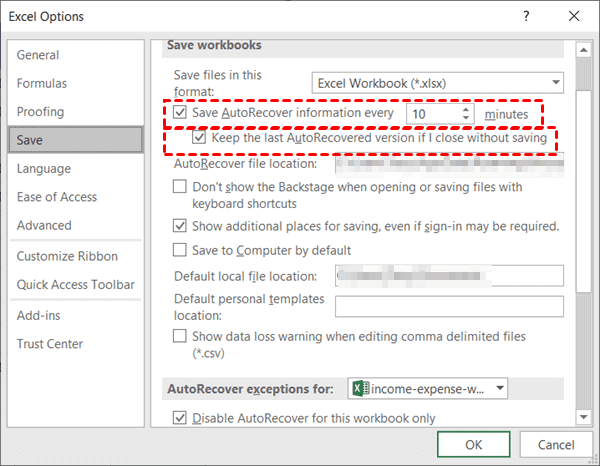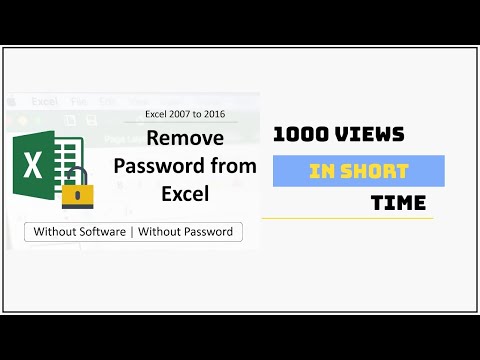Recover Excel Sheet Password: Easy Guide

The need to recover an Excel password is more common than one might think, often happening when users forget or lose their passwords to spreadsheets vital for personal or professional use. Unlocking a locked Excel file without the key can appear daunting, but fortunately, there are straightforward methods to recover or unlock an Excel sheet password. This guide will walk you through the steps, share useful tips, and highlight why maintaining backups and using strong, memorable passwords is beneficial.
Why You Need to Recover Excel Passwords

First, let's consider the scenarios:
- You forgot the password to an Excel file containing critical financial data.
- You inherited an Excel sheet with a password from a former employee.
- A password-protected Excel file has been accidentally locked.
Recovering an Excel password ensures you regain access to crucial information that could otherwise be lost or inaccessible, impacting business operations or personal record-keeping.
Methods to Recover Excel Password

Using Excel Features

Microsoft Excel does offer a built-in feature to reset or remove passwords:
- File Sharing Password: If you know the Read-Only password, you can use it to change the Write password.
- Workbook Protection: Unprotect the workbook with your Protection password or use VBA (Visual Basic for Applications) to unlock it.
⚠️ Note: These steps work only if you have partial access or knowledge of some passwords.
Using Third-Party Tools

When in-house solutions fail, third-party software comes to the rescue:
- Password Recovery Tools: Software like PassFab for Excel, Accent Excel Password Recovery, or iSeePassword excel password recovery can attempt to recover or remove the password.
- Steps to Use Recovery Tools:
- Download and install a trusted password recovery tool.
- Open the tool and select the locked Excel file.
- Choose the appropriate attack type (brute-force, dictionary, or masked attack).
- Initiate the password recovery process, which can take varying amounts of time.
🔑 Note: Recovery tools might not always succeed due to encryption strength, but they offer a good chance for password recovery.
Creating Password Recovery Backups

While not a method to recover a lost password, having backups in place can mitigate the risk:
- Use Microsoft OneDrive or Google Drive for automatic backups.
- Always keep a hard copy or unprotected version of your spreadsheets.
Best Practices for Excel Passwords

To prevent the need for password recovery in the future:
- Use Strong Passwords: Ensure your password includes a mix of letters, numbers, and special characters.
- Password Managers: Utilize a password manager to generate and store secure passwords.
- Regular Backups: Set up automatic backups, especially for vital files.
- Password Reset Options: Familiarize yourself with Excel’s password reset or recovery mechanisms.
Recovering an Excel password might seem complex, but with the right tools and knowledge, it's manageable. Keeping backups, using strong and memorable passwords, and understanding Excel's own password management features are pivotal in reducing the need for emergency password recovery. Remember that this guide provides steps for recovering passwords but also emphasizes the importance of proactive password management for future security.
Can I recover an Excel password if I’ve forgotten it entirely?

+
If you’ve forgotten your Excel password entirely, the chance of recovery depends on the complexity of the password. Tools like password recovery software can attempt to brute-force or use dictionary attacks to recover it, but success isn’t guaranteed if the encryption is strong.
Is it legal to use password recovery tools?

+
Using password recovery tools to recover passwords on files you own or have legal access to is generally considered legal. However, using these tools on files without permission can violate privacy laws or other regulations, so always ensure you have the right to access the data.
How can I prevent losing Excel passwords in the future?

+
Preventive measures include using password managers, maintaining secure backups, creating a list or document of passwords stored in a safe place, and using Excel’s own password management options where possible.



